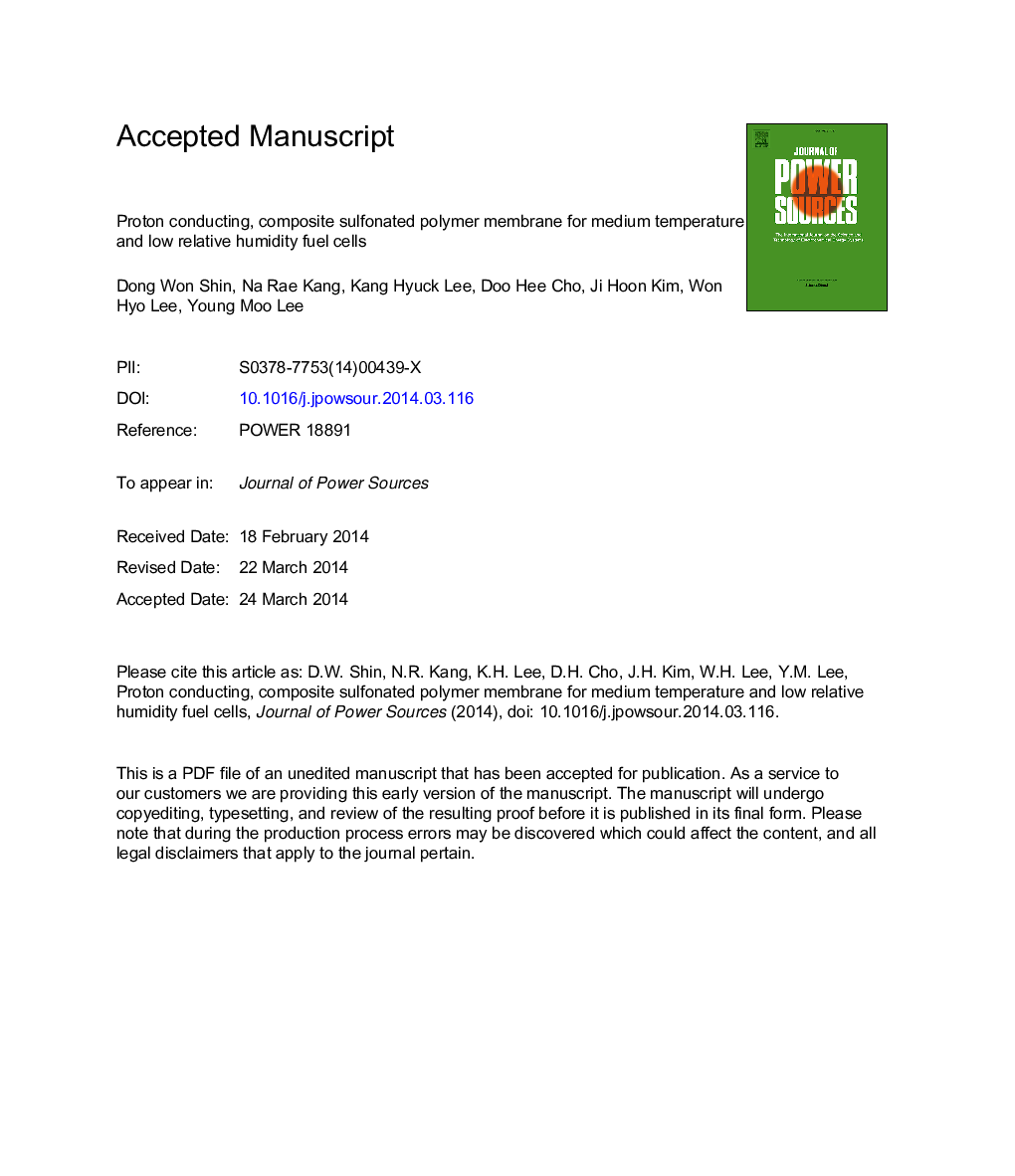| Article ID | Journal | Published Year | Pages | File Type |
|---|---|---|---|---|
| 7736300 | Journal of Power Sources | 2014 | 34 Pages |
Abstract
Inorganic-organic composite membranes are fabricated using zirconium acetylacetonate nanoparticles and biphenol-based sulfonated poly(arylene ether sulfone) as an inorganic, proton conducting nanomaterial and a polymer matrix, respectively. An amphiphilic surfactant (Pluronic®) induces distribution of the inorganic nanoparticles over the entire polymer membrane. The composite membranes are thermally stable up to 200 °C. Zirconium acetylacetonate improves inter-chain interactions and the robustness of polymer membranes resulting in excellent membrane mechanical properties. In addition, composite membranes show outstanding proton conductivity compared to that of the pristine membrane at medium temperatures (80-120 °C) and low relative humidity (<50%) conditions. This improvement is due to the presence of acetylacetonate anions, which bind water molecules and act as an additional proton conducting site and/or medium. Therefore, the composite membranes significantly outperform the pristine membrane in fuel cell performance tests at medium temperatures and low relative humidity.
Related Topics
Physical Sciences and Engineering
Chemistry
Electrochemistry
Authors
Dong Won Shin, Na Rae Kang, Kang Hyuck Lee, Doo Hee Cho, Ji Hoon Kim, Won Hyo Lee, Young Moo Lee,
